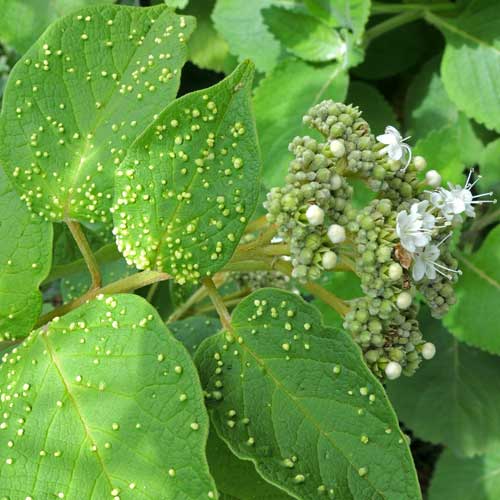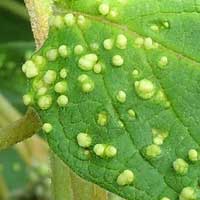Cordia

Photographed on the Elgeyo Escarpment below Iten, Kenya. July 2014.
Cordia Gall Mite

LEAVES: Large and broadly elliptic
leaves are much softer textured than the similar Cordia
#2. Margins are slightly wavy, prominent veins below.
Alternate on the stems and with strong scent when crushed. The
pale bumps on the leaf surfaces are caused by minute, parasitic
mites.
SHRUB: The observed specimen was about a
1½ meters tall with several sturdy, woody
stems.
FLOWERS: The flowers are white, with five united petals,
five stamens, and a short tube. The flowers are
grouped into scorpioid clusters that are further arranged into a flat-topped cluster.
RANGE: Several species of this genus are found in
Kenya.
FRUIT: The fruits are globose and berry-like - these
harden and usually contain one seed.
UNARMED.
Cordia leaves often serve as the host plant for parasitic gall mites belonging to the Eriophyidae. The mites are minute and are concealed inside the galls. It would seem that the plants do not gain any benefit from the wart-like blisters cover large portions of the leaf surface. Follow the thumb link at left for more information.